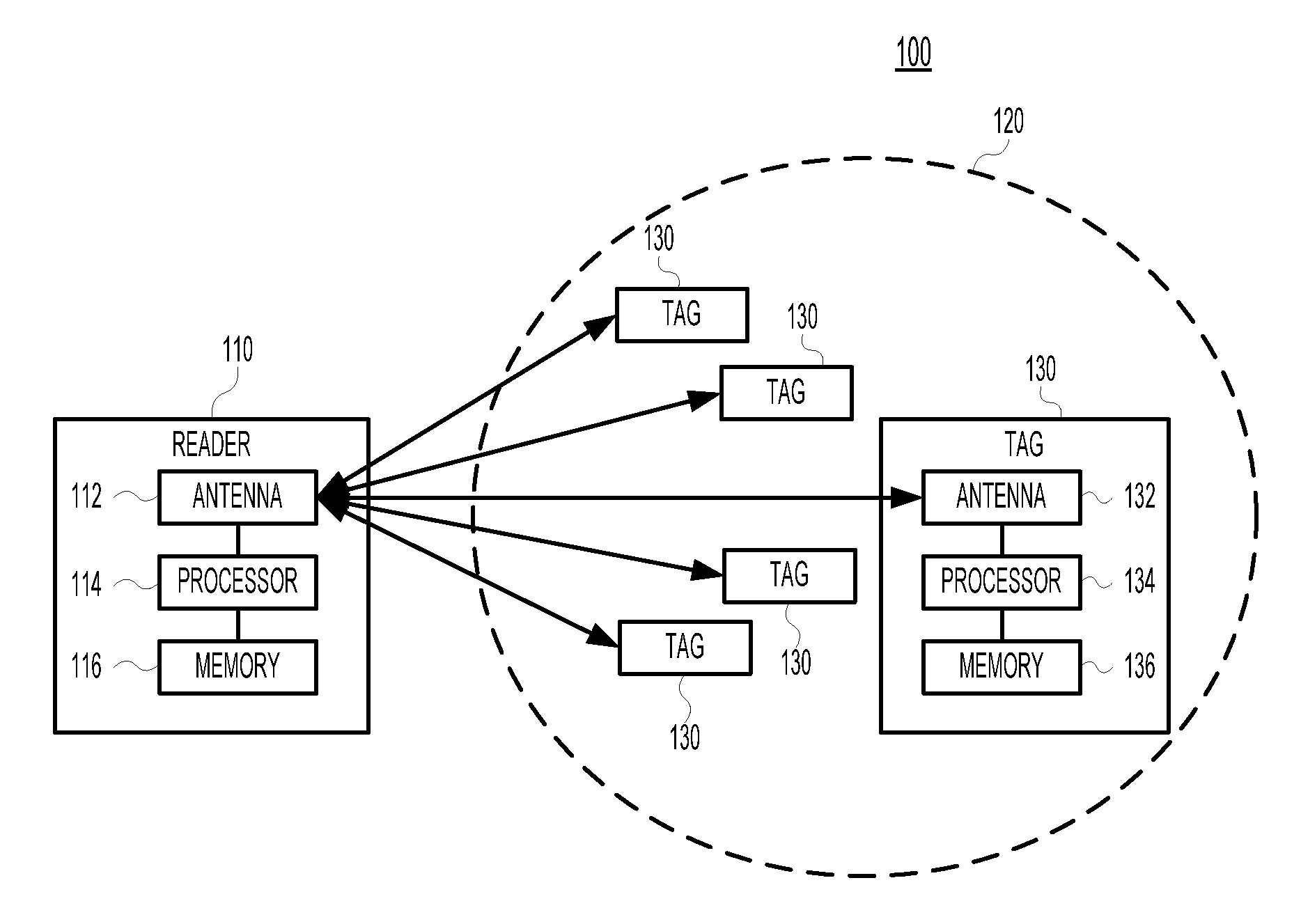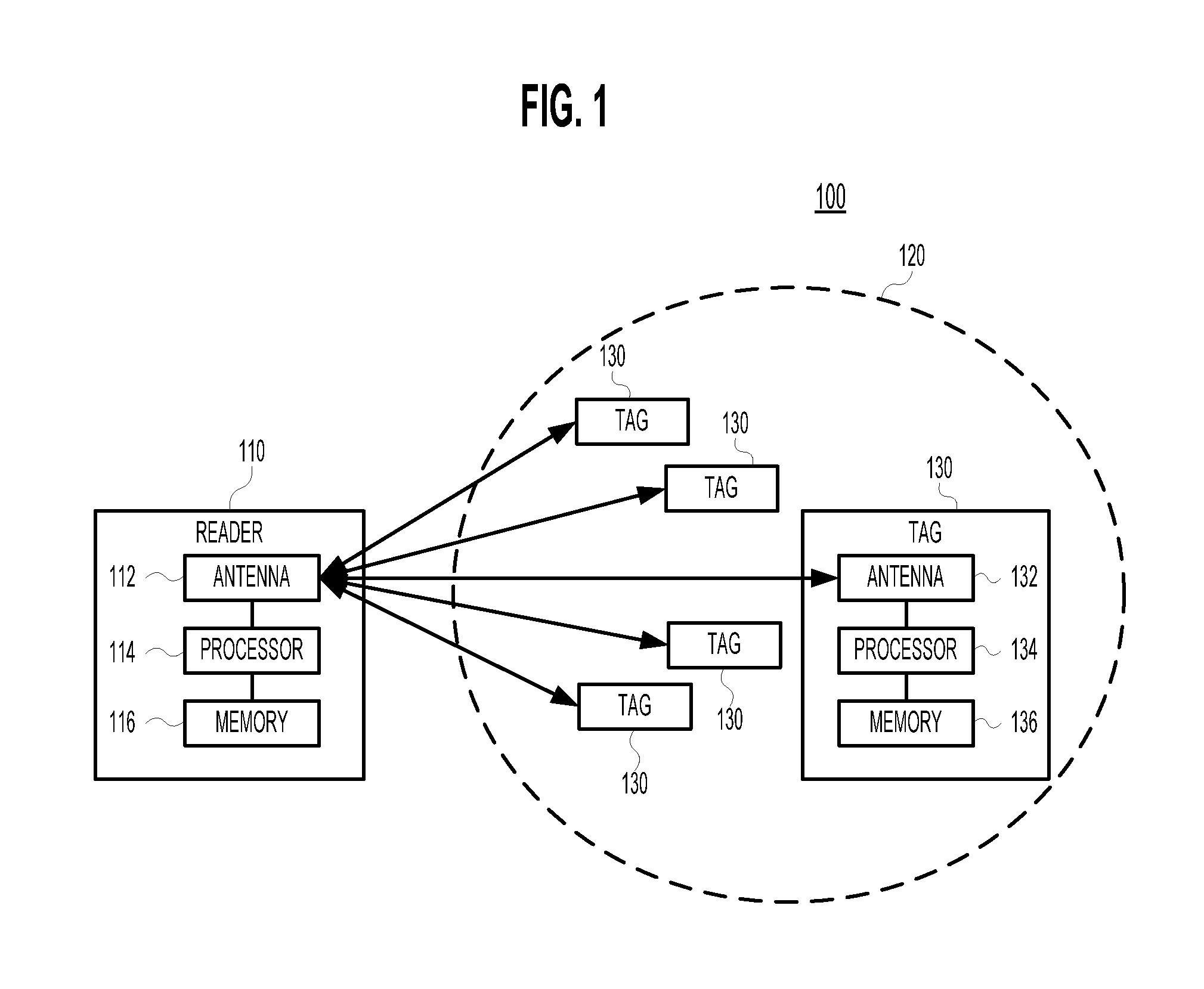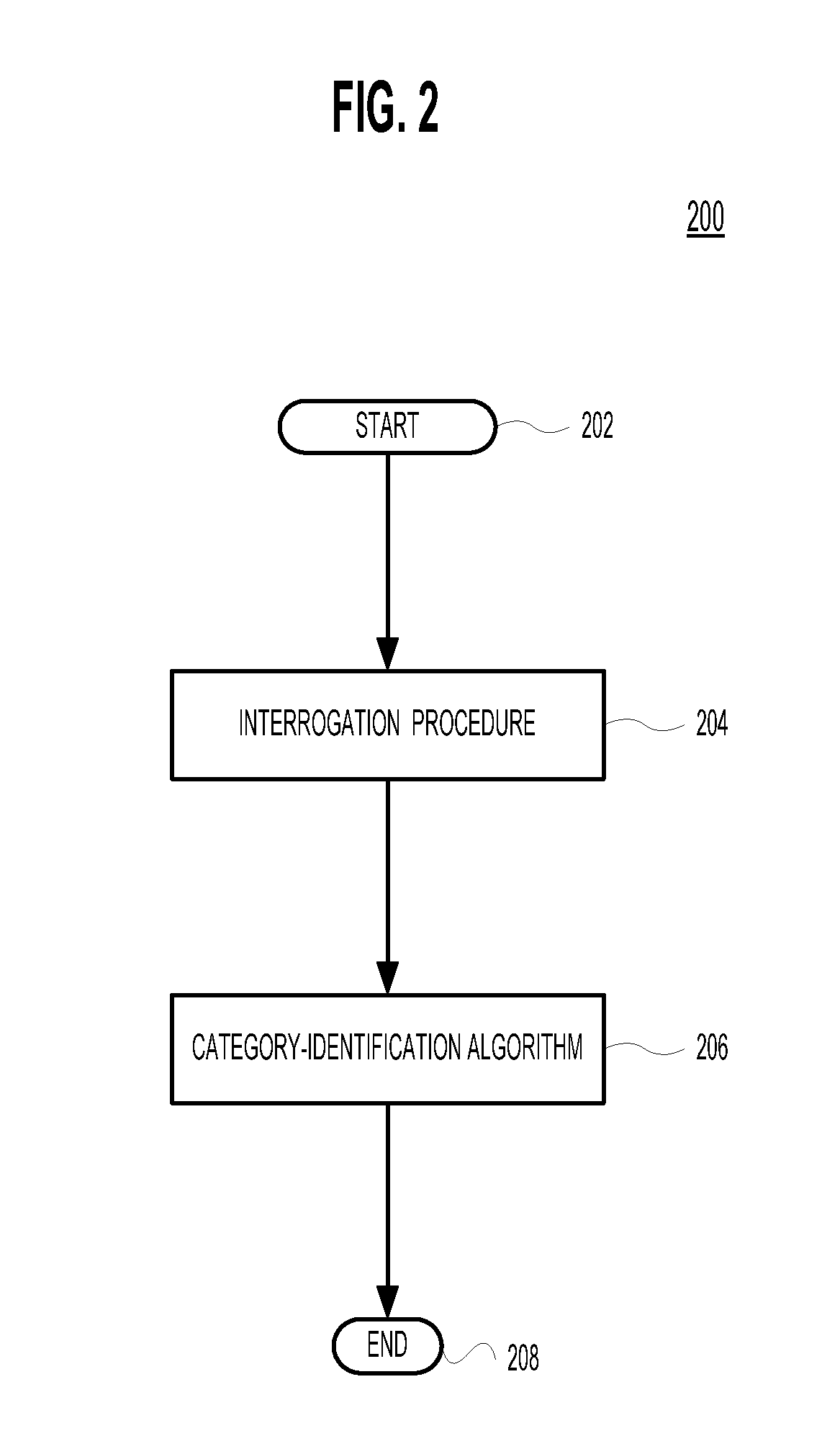Identifying RFID categories
a radio frequency identification and category technology, applied in the field of digital communication, can solve the problems of inability of the reader to determine how many tags he or she receives, the inability of the reader to state with certainty which tags are in the system, and the inability of the reader to identify the particular tags that are transmitting during the slo
- Summary
- Abstract
- Description
- Claims
- Application Information
AI Technical Summary
Benefits of technology
Problems solved by technology
Method used
Image
Examples
Embodiment Construction
[0024]The set of all possible tag categories is denoted N, and the number of distinct categories in set N, i.e., the cardinality of set N, is denoted n. The set of distinct categories currently present in a particular RFID system is denoted T, and the number of distinct categories in set T, i.e., the cardinality of set T, is denoted t. It is assumed that set N and cardinality n are known quantities, and that cardinality t can be estimated. One method for estimating cardinality t can be found in U.S. patent application Ser. No. 11 / 525,339 filed on Sep. 22, 2006 as attorney docket no. Kodialam 46-9, which application is herein incorporated by reference in its entirety.
[0025]Various embodiments of the present invention are systems and methods for efficiently determining, with probability greater than 1−∈, where 0<∈<1, the set T of distinct categories present in an RFID system. In other words, on average, out of 1 / ∈ interrogations to identify set T, no more than one interrogation should...
PUM
 Login to View More
Login to View More Abstract
Description
Claims
Application Information
 Login to View More
Login to View More - R&D
- Intellectual Property
- Life Sciences
- Materials
- Tech Scout
- Unparalleled Data Quality
- Higher Quality Content
- 60% Fewer Hallucinations
Browse by: Latest US Patents, China's latest patents, Technical Efficacy Thesaurus, Application Domain, Technology Topic, Popular Technical Reports.
© 2025 PatSnap. All rights reserved.Legal|Privacy policy|Modern Slavery Act Transparency Statement|Sitemap|About US| Contact US: help@patsnap.com



